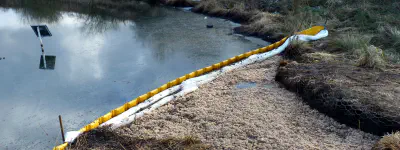Quantification and characterisation of pre-production pellet pollution in the Avon-Heathcote Estuary/Ihutai, Aotearoa-New Zealand

Abstract
Plastic pollution is threatening aquatic ecosystems and wildlife. Understanding the characteristics and extent of plastic pollution is the first step towards improving management and therefore the environmental impacts. Pre-production pellets are used in the manufacture of a range of consumer items. The Avon-Heathcote Estuary/Ihutai in Aotearoa-New Zealand, an important wildlife habitat, was assessed for the presence and characteristics of pre-production pellets. Following a visual survey of the estuary’s perimeter to establish overall levels, seven accumulation hotspots were identified, and surveyed in more detail. The enumeration and characterisation of pellet colour, size, morphology, degree of weathering and polymer type was undertaken. A total of 3819 pellets were identified, with pellets present at all sites. The pellets were predominantly clear (86%), 3 mm in size (54%), cylindrical in shape (62%), showed moderate weathering (41%) and were made of low-density polyethylene (LDPE) (53%). Pellet abundance and characteristics varied between sites. Accumulation and abundance may be influenced by river inflows along which plastic manufacturers are located, weather conditions, locality to stormwater outlets and pellet characteristics. Pellet pollution is a notable problem in the Avon-Heathcote Estuary/Ihutai and it highlights the need to better understand the sources and improve best management practices.